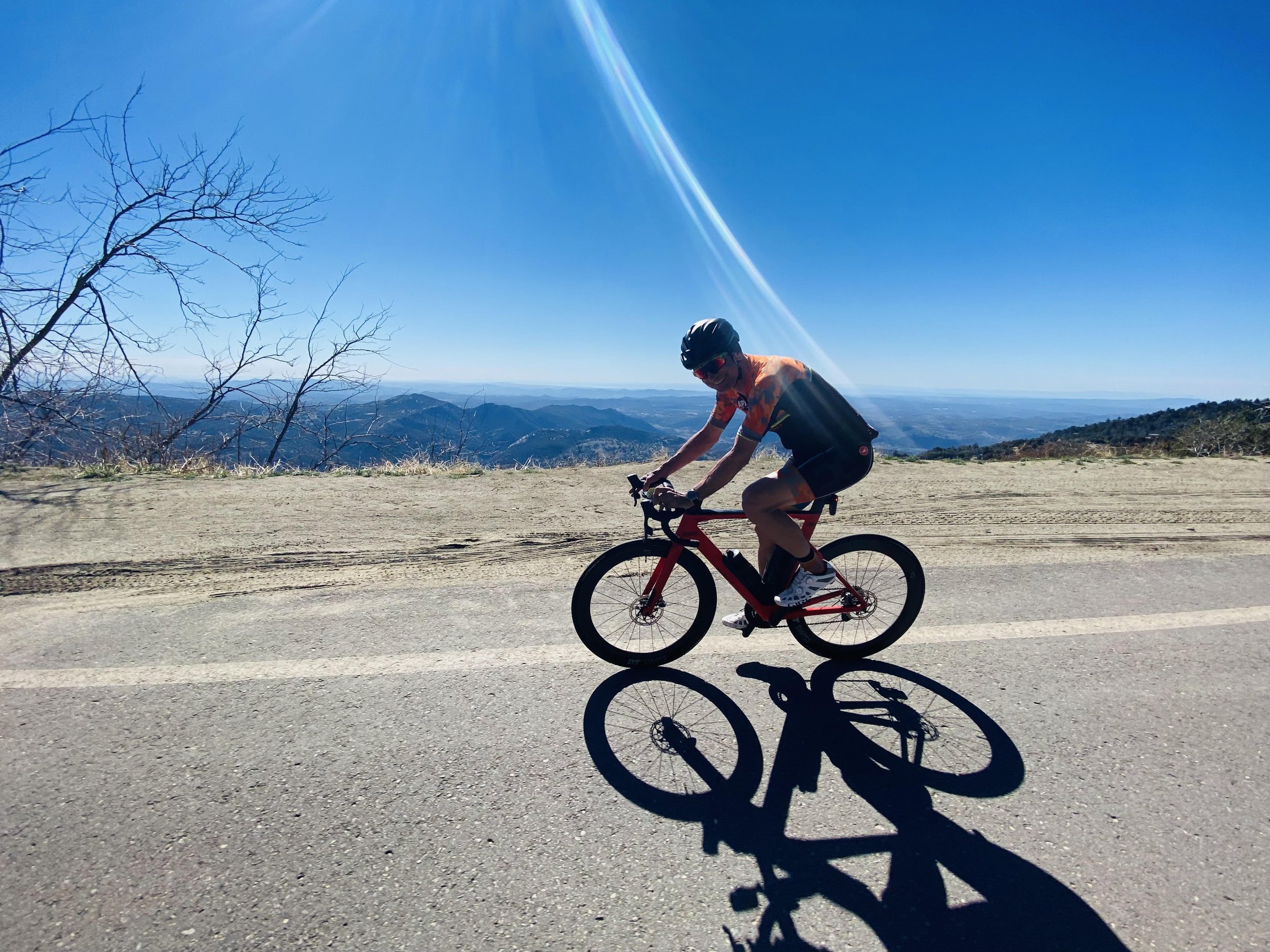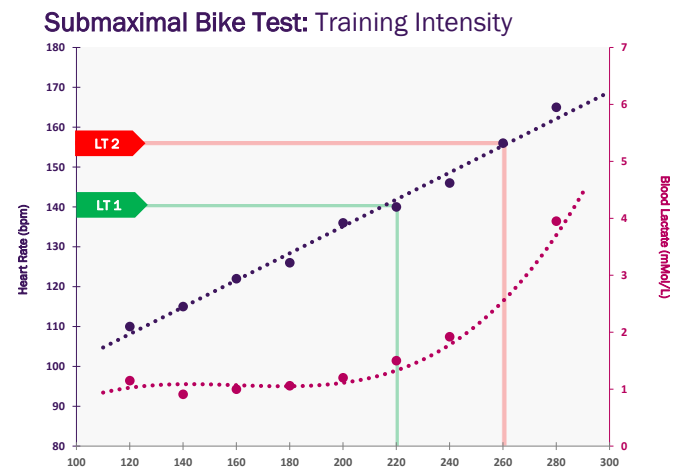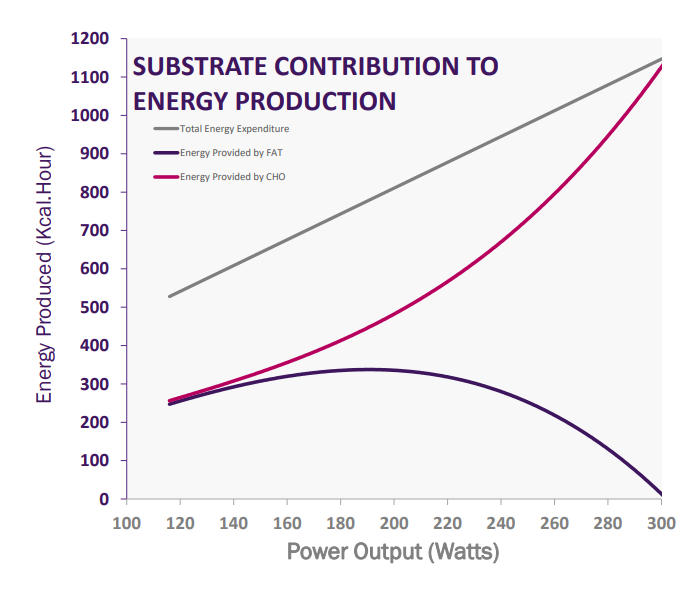How to Become a Better Climber - Sprinter’s Edition
Skeletal muscles are composed of fibers with markedly different characteristics. Generally fibers are classified as either fast twitch or slow twitch. The ‘twitch’ being the time taken for a motor unit to develop force and then relax. A motor unit consists of the motor neuron (the electrical signaling pathway) and the fibers it innervates. Commonly identified fiber types are type 1 (slow twitch), and type 2A, or type 2X (both fast twitch). Type 1 fibers are smaller than type 2 fibers and appear red in color due to the high concentration of blood capillaries. With a higher amount of blood flowing in and greater mitochondrial density, these muscle fibers are efficient, fatigue resistant, and have a high capacity for aerobic energy supply. However type 1 fibers have limited potential for rapid force development. Type 2 fibers, by contrast, can produce rapid force development but become fatigued quickly. Type 2 fibers are generally larger and respond well to high intensity loads such as weight training.
Baker City Cycling Classic. On the Ropes and Off the Back
Last year was my third bash at the Baker City Cycling Classic (BCCC), a three day stage race in Eastern Oregon. The defining moment came for me in the last ‘Queen stage’ on the second of three sustained climbs we needed to negotiate before a long run through a valley and the last long uphill ramp to the finish after 100 miles of racing. This is where my race was essentially over. I dug myself into a hole trying to stay with the group and then, with all matches burned, I lost sight of them as we went over the top. At that moment I could still, annoyingly, hear other riders talking somewhat casually, as I was fighting for breath. What just happened? Really? Was I really that much less ‘fit’ than my adversaries?
Back at the hotel that evening I was talking with my teammate, Chris, who remarked that he too was getting over those passes “right at FTP”. Now Chris is the most modest, least ego-driven guy I know, so I knew that his 300W FTP was where he was at over the top of those climbs. “Dude! FTP? I was beyond VO2max! Crazy. Now undoubtedly Chris is a little younger and far more gifted than me as an athlete. But the disparity in our perceived exertions on the same stretch of road was striking. For BCCC I had been training for months, and had lost over ten pounds in weight. I was convinced that my now lean 160 pound frame would get over those passes just as well as anyone else in that group. Evidently it was not to be.
This has all got me thinking about body types and whether we’re all eventually destined to just do well in what we do well in. I can sprint. Chris can’t sprint. I’ll see 1200W on a determined push for the line. Not too shabby for a guy in his sixties. But is that all I can do? Am I a one-trick cycling pony? When I look in the mirror, I see muscle. Not body builder muscle, but you know – defined I guess. A ‘mesomorph’. Thinking about the guys I was up against that day, there were a lot of ‘ectomorphs’ – long lanky limbs, narrow hips, skinny dudes. Something is playing a big role in their climbing performance other than the fact that they obviously were lean. The clue was in the ‘shape’ of those bodies, not just the weight of them. That something turns out to be the type of fiber making up their locomotor muscles.
It’s probably safe to assume that guys like Robert Forstermann have a large proportion of fast-twitch fibers in their muscles.
Muscle Fiber Types and Realizing Your Potential - or Lack Thereof
Skeletal muscles are composed of fibers with markedly different characteristics. Generally fibers are classified as either fast twitch or slow twitch. The ‘twitch’ being the time taken for a motor unit to develop force and then relax. A motor unit consists of the motor neuron (the electrical signaling pathway) and the fibers it innervates. Commonly identified fiber types are type 1 (slow twitch), and type 2A, or type 2X (both fast twitch). Type 1 fibers are smaller than type 2 fibers and appear red in color due to the high concentration of blood capillaries. With a higher amount of blood flowing in and greater mitochondrial density, these muscle fibers are efficient, fatigue resistant, and have a high capacity for aerobic energy supply. However type 1 fibers have limited potential for rapid force development. Type 2 fibers, by contrast, can produce rapid force development but become fatigued quickly. Type 2 fibers are generally larger and respond well to high intensity loads such as weight training.
Your muscles’ motor units are recruited in a sequential order depending on the force demanded of them. This is known as the ‘size principle’ where smaller, low force-producing type 1 muscle fibers are recruited first, having a low recruitment threshold. As the force required - in this case to turn the pedals, increases, larger type 2 fibers are recruited to assist. These fibers have a higher recruitment threshold, twitch faster and hence can produce greater amounts of power. This comes at a cost however – as stated above, these fibers will fatigue quickly.
You can’t change the makeup of your body’s locomotor muscles. Your genes dictate the percentage of type 1 to type 2 fibers. Something you are born with, and that in principle can’t train your way out of. Whatever you do in your training, a type 2 muscle fiber will remain a type 2 muscle fiber. It is true however, that a type 2 fiber can adapt to a training load and develop a limited capacity to utilize oxygen to produce power – so-called type 2X fibers can become type 2A fibers. Still, clearly those riders who are genetically made up of a greater percentage of type 1 fibers with their greater blood supply and higher mitochondrial density, will have the edge when it comes to sustained high intensity efforts at threshold or below. On that climb at BCCC I was recruiting less type 1 fibers and more fatigue-prone type 2 fibers than my competitors. Yes, perhaps they had made more advanced adaptations to their cardiovascular systems, but working well aerobically calls for efficiency in the entire energy production system. More type 1 fibers equals more aerobic capacity.
Tadej Pogačar. Skinny ectomorph only good at Climbing? Hardly. Pog can put down more power at the end of a race than most in the pro peloton
Training to Overcome
Is it a done deal then? Are we all destined to be one-trick ponies and should we therefore never expect a good result unless the course profile exactly matches the kind of efforts we are naturally built for? At the sport’s elite level that may be true. Mark Cavendish will never be first up the Alpe d’Huez, and Jonas Vingegaard will never outsprint Jasper Philipsen. Much of course comes down to racing smart and getting yourself in the right moves, but at the amateur level at least there are ways to level the playing field somewhat through the right training.
If you are of the mesomorph type – bigger and more muscular, spending time working at zone 2 intensities will help develop your aerobic energy system including making the type 1 fibers you do have more efficient. Training at this level leads to increased vascularization of the involved muscles as well as more mitochondria – the organelles within the muscle cell that use oxygen and glucose to produce power. You can work harder and still achieve these gains of course – the body is still using oxygen to make power right up to VO2max, however beyond zone 2 you’ll be generating considerable stress on your body and most likely recruiting more easily fatigued type 1 fibers. You’ll carry that fatigue into the following days, limiting the overall time you’ll end up spending working the target energy system. There are many well-documented benefits to zone 2 training, with increased efficiency of your slow-twitch muscle fibers high on the list.
If you are an ectomorph you are probably doing just fine as far as type 1 muscle fiber count goes. Since you’re probably spending a lot of time doing what you do best – sustained climbs, you may only rarely reach the level of intensity needed to fire off those high recruitment threshold type 1 fibers. Although you’ll never have the same quantity of these fibers as your mesomorph peers, you need to train what you do have in order to increase your competitiveness when it comes to all-out power. You may not ever want to contest a full bunch sprint, but if you arrive at the line with a small group after a day of climbing, some well-developed type 2 fibers will make all the difference. Get to the gym where heavy resistance reps activate ALL of your muscle fibers including those with a high activation threshold. High power /short duration intervals will also work, as well as higher rep sets on the leg press /squat rack. However maximum force production depends on recruiting muscle motor units with the very highest thresholds. Go heavy. Once a motor unit is recruited, less activation is needed to reactivate it, so over time you are teaching these fibers to become more responsive to your power needs.
You’ve Got This!
Just finishing a stage race like Baker City is a massive accomplishment for any amateur cyclist. Something to be embraced at all ability levels and no matter what your relative strengths and weaknesses are. With the right training approach you too can end up at the pointy end of the pack, whether it’s a flat sprint stage or a big climb. Working with a coach and following a structured plan based on your specific goals is by far the best way to get the most out of the time you have for training. At Dialed Performance Coaching we make sure to tailor every workout so you are ready to be competitive whatever your goal events are. Contact us at www.dialedperformancecoaching.com for more information.
Zone 2 and Your Winter Training Routine
Zone 2 training is all the buzz these days. In the racing off-season especially, we are told that zone 2 rides are where we should be investing most of our time on the bike, but why is that? When the days are short and the weather is crappy, it’s definitely tempting to question your life choices and we often find ourselves wondering “why am I doing this?” – what purpose is this serving? My advice has always been to ride with purpose – cut out the junk miles and make every ride count for something – so what are we actually achieving on those long winter Z2 rides, and how is it any different to the old-school ‘long steady distance’ rides that have always been part of the ‘tradition’ of off-season bike training?
Zone 2 training is all the buzz these days. In the racing off-season especially, we are told that zone 2 rides are where we should be investing most of our time on the bike, but why is that? When the days are short and the weather is crappy, it’s definitely tempting to question your life choices and we often find ourselves wondering “why am I doing this?” – what purpose is this serving? My advice has always been to ride with purpose – cut out the junk miles and make every ride count for something – so what are we actually achieving on those long winter Z2 rides, and how is it any different to the old-school ‘long steady distance’ rides that have always been part of the ‘tradition’ of off-season bike training?
Let’s answer that last question first by establishing what zone 2 intensity is. Most cyclists are familiar with Andy Coggan’s 7 zone model of power intensity based on a percentage of maximum aerobic power. Zone 2 is considered an endurance pace – something you can maintain for several hours relatively easily. Since the idea of all training is to stimulate the body to make fitness-improving adaptations, TRAINING at zone 2 means riding at the high end of this range with the goal of gradually being able to put down more power for a given perceived effort. Physiologically this is the point where the energy demands of your muscle cells cannot be met by aerobic metabolism alone. You can see this in the lab if you ever do a submaximal power test measuring your blood lactate levels. At your “aerobic threshold” blood lactate levels begin to rise, indicating that your glycolytic energy system has been recruited to help out with the effort. Outside of the lab, you know you are there when you can still hold a conversation, but talking starts to become labored and you honestly would prefer your riding partner to just shut up so you can concentrate on breathing. This level of intensity is the sweet spot. The idea of training at zone 2 is to push this sweet spot ‘up the line’ so that it is occurring at a higher power output.
Blood lactate levels vs. power output. Ideally LT1 will occur further to the right along the graph
Your skeletal muscles are made up of several fiber types, broadly classified as ‘slow twitch’ or ‘fast twitch’ (type 1 or type 2). The proportion of the fiber makeup is dependent on your own body type and the influence of your genes. Generally, successful endurance athletes will have a greater percentage of type 1 fibers, and athletes involved in shorter, explosive efforts such as sprinters, will have a relatively larger percentage of type 2 fibers. Training at zone2 intensities is targeting your aerobic system as a whole, but critically we are looking for adaptations to the type 1 muscle fibers so that they become more efficient at producing energy aerobically. Your muscles will increase in mitochondrial density as well as increase in vascularity, giving them more ability to process oxygen, . The increase in the number of mitochondria as well as their size, and the increase in blood flow to the working muscles ultimately means more efficient processing of oxygen and glucose to produce energy.
As an added bonus, the fuel used in the slow twitch fibers to produce energy is predominantly fat at these intensities, so by extending your body’s ability to utilize fat as fuel, you’ll be able to work longer before eating into your limited carbohydrate stores. Carbohydrates can be replenished during the race or workout, but only at a certain rate. By fostering the ability to run longer on fat, you’ll be able to hold on to your carb reserves for when they’re really needed – during those intense efforts such as bridging to a breakaway, or powering over that final steep climb.
At lower intensities fat is a predominant source of energy, however carbohydrate is used exclusively to fuel high power efforts. Training at Z2 helps the muscles rely on fat metabolism at increasing intensities
In short then, ride Z2 during the winter months. Focus on steady smooth, long efforts, but ride with focus and purpose. These are not just long slow steady rides, but rather specific, and effective, work for your aerobic base. Unlike intervals done at higher intensities, the gains made through Z2 training can be long lasting - carrying you through to the intensive and event specific work you’ll be doing as race season gets closer.
If you’re interested in getting personalized advice to optimize your winter training, consider contacting us at Dialed Performance Coaching. We offer personalized, structured training programs that fit in with YOUR schedule and are based around YOUR goals. At just $175 per month, it is for sure the most effective way to get into the shape of your life and take your cycling to the next level..







